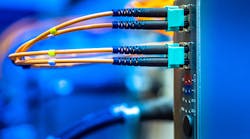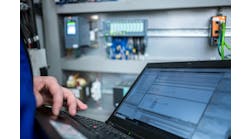Freeman Smith is the founder of Nufactur.
What have been the biggest improvements to machine-controls technology in the past five years?
Freeman Smith, founder, Nufactur: The widespread adoption of IO-Link masters has been the biggest improvement. IO-link masters are a great compromise between a truly open system and proprietary technology. Any company can manufacturer components that work with an IO-Link master. This allows machine designers to use the proprietary PLC hardware and communication protocols that implement best with their system. The IO-Link master itself is a slim, durable, cost-effective way to handle field inputs and outputs. The adoption of IO-Link masters is an elegant way to promote interconnectivity while maintaining the competitive market forces that have made the large proprietary controls companies so successful.
Also read: How to grow disruptive automation with AIoT
What’s the most innovative or efficient machine-controls technology application you’ve ever seen or been involved with?
Freeman Smith, founder, Nufactur: An Amazon fulfillment center's machine-controls were mind-blowingly fast and precise. PLCs monitored robots handling products, conveyor belts transporting them, pneumatic and electric actuators manipulating the workpieces; cameras were inspecting and measuring; sensors were monitoring every aspect of the environment—all while OEM machines cut cardboard boxes to the exact dimensions of the product, packed them, slapped on a label and palletized the boxes, so they were ready to go out the other door. The interwoven accuracy of every input and output was a marvel of modern machine controls.
How has machine-controls technology benefited from remote monitoring and connectivity?
Freeman Smith, founder, Nufactur: Remote monitoring and connectivity means machine controls can collect data on remote servers. This means that the data collection and analysis is not limited to the computation power of the PLC. Machine-control technology can now be monitored by much more powerful machines capable of storing larger quantities of data. This ability to store and analyze data has enabled predictive maintenance, diagnostics and process improvements in machine controls that was not possible before.
Can you explain how software development has changed machine controls in discrete manufacturing?
Freeman Smith, founder, Nufactur: Software advancements have enabled PLCs to handle the massive amounts of data being received by the field I/O. The incoming data is of different types, speeds and sizes. Thanks to advancements in machine-control software, that data can be quickly extracted, transferred and loaded in a uniform way that allows for data analysis. This data analysis manifests as practical improvements to discrete-manufacturing processes.
How do control technologies figure into digital-twin platform models being used by manufacturers?
Freeman Smith, founder, Nufactur: Digital-twin platform models are used to simulate how a physical object will react to a manufacturing process or environment. The information about the process and environment is received through input modules in the machine-control system. Advancements in control technologies have enabled manufacturers to receive more detail and accurate information about their process and then transfer that into a digital format that can be used with digital-twin platform models. This improves the precision of digital-twin simulations and the manufacturing process as a whole.
When will machine controls become IT-friendly enough that engineers are no longer required for installation and operation?
Freeman Smith, founder, Nufactur: Machine controls are currently split into tasks that are intuitive enough to be accomplished by maintenance workers and tasks that require engineers for installation and operation. I imagine that instead of machine controls becoming completely intuitive, the divide will widen and 90% of tasks will be accomplished with little training, while a small set of tasks will require expert engineers. There is a still a lot of a technological innovation that needs to happen in machine controls, and typically user-friendliness comes in later iterations of technology.
What future innovations will impact the use of machine-controls technology in discrete-manufacturing operations?
Freeman Smith, founder, Nufactur: I think we are all looking forward to the day when machine controls go wireless. It may be the last industry to achieve this goal because of the incredible amount of interference in manufacturing environments, but, when the wireless revolution comes, it will be widely celebrated. Cables are amazingly expensive and too often the bending capabilities of cables are the bottleneck to designing machines. I look forward to the efficient, sleek machines that will come once wireless machine controls become commonplace.






